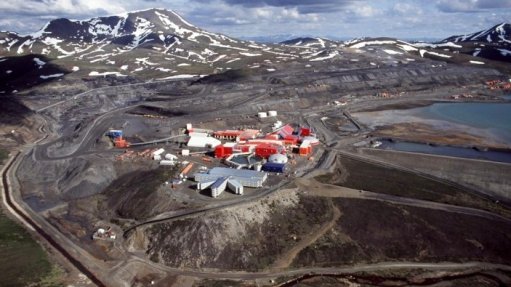Mining industry shed nearly 7 000 jobs in the second quarter
The mining sector shed 6 926 jobs in the second quarter, according to Statistics South Africa’s latest Quarterly Employment Statistics (QES), bringing the total number of workers still employed in the sector to 472 153.
The second-quarter decline follows mining job losses of 2 696 in the first quarter, implying that, relative to the fourth quarter of last year, mining sector employment declined by 9 622 in the first half of this year.
Although there was already talk of significant mining job losses in the second half of 2023, the formal processes were only concluded earlier this year, with the adverse impact on jobs only now being recorded in the QES, Minerals Council South Africa chief economist Hugo Pienaar explained on September 27.
The outcome for mining employment in the second quarter contrasts with the rest of the economy, where 49 271 jobs were added in the second quarter.
“However, this needs to be qualified as the increase in non-mining jobs was almost exclusively the result of the temporary employment of Independent Electoral Commission (IEC) workers tied to the May national elections.
“Except for a negligible increase in the electricity sector, besides the temporary IEC workers, employment declined in all the other major economic sectors surveyed during quarter two,” Pienaar pointed out.
He noted that, if community services, which was the category in which IEC workers were captured, were discounted from the total employment figure, then employment actually declined by more than 50 000 in the second quarter.
Manufacturing lost 16 817 jobs, while the finance sector saw 13 659 jobs cut. These two sectors were hit the hardest.
“Given this nuance, one has to say it was a weak quarter for jobs in an overall sense. This is consistent with stagnant real GDP growth in the second quarter and emphasises that the Government of National Unity (GNU) needs to fast-track the structural reforms started in the sixth administration,” Pienaar said.
He noted, however, that, if sustained going forward, the recent improvement in the domestic macroeconomic environment boded well for improved employment prospects.
The more conducive macroeconomic conditions include that loadshedding has been absent since late-March. State-owned utility Eskom’s summer outlook, from September to March, suggests that power cuts will remain absent.
Further, the rate of increase for headline consumer price index (CPI) inflation moderated to 4.4% year-on-year in August to below the South African Reserve Bank’s (SARB) target of 4.5%.
Along with an improved inflation outlook, Pienaar said this provided room for the SARB to reduce the policy interest rate by 25 basis points in September. He said more rate cuts were expected in the next 12 months.
Further, Pienaar noted that investor, business and consumer confidence increased in the third quarter following the formation of the GNU.
“A further improvement in confidence is necessary for higher levels of fixed investment, an important ingredient for higher GDP and employment growth,” he said.
Pienaar noted that, while there was little doubt that an improved macroeconomic environment would also benefit the mining sector, industry-specific constraints were likely to continue to weigh on mining jobs.
“Top of mind are low platinum group metals (PGM) prices. Given that the PGM sector is by far the biggest employer in mining, [providing about] 183 000 jobs out of total mining employment of 479 000 in 2023, the ongoing uncertainty about future vehicle demand for PGMs remains a big concern,” he said.
In the bulk commodity space, Pienaar said the slow, albeit welcome, improvement in State-owned Transnet’s operational performance suggested that coal and iron-ore mining companies would not be expanding capacity and adding to their workforce anytime soon.
“This does once again raise the need for a mining-friendly regulatory environment, including the fast-tracked implementation of the online mining cadastre that includes processes to, among others, remove the double-granting of exploration and mining rights,” Pienaar emphasised.
In addition, he said there was a need to guard against any measures that had the potential to postpone a recovery in mining production and employment.
Among these, Pienaar highlighted Eskom’s application to increase electricity tariffs by more than 36% from April 2025.
“Such an increase will be untenable, both for energy-intensive sectors such as mining and households,” he said.
Article Enquiry
Email Article
Save Article
Feedback
To advertise email advertising@creamermedia.co.za or click here
Announcements
What's On
Subscribe to improve your user experience...
Option 1 (equivalent of R125 a month):
Receive a weekly copy of Creamer Media's Engineering News & Mining Weekly magazine
(print copy for those in South Africa and e-magazine for those outside of South Africa)
Receive daily email newsletters
Access to full search results
Access archive of magazine back copies
Access to Projects in Progress
Access to ONE Research Report of your choice in PDF format
Option 2 (equivalent of R375 a month):
All benefits from Option 1
PLUS
Access to Creamer Media's Research Channel Africa for ALL Research Reports, in PDF format, on various industrial and mining sectors
including Electricity; Water; Energy Transition; Hydrogen; Roads, Rail and Ports; Coal; Gold; Platinum; Battery Metals; etc.
Already a subscriber?
Forgotten your password?
Receive weekly copy of Creamer Media's Engineering News & Mining Weekly magazine (print copy for those in South Africa and e-magazine for those outside of South Africa)
➕
Recieve daily email newsletters
➕
Access to full search results
➕
Access archive of magazine back copies
➕
Access to Projects in Progress
➕
Access to ONE Research Report of your choice in PDF format
RESEARCH CHANNEL AFRICA
R4500 (equivalent of R375 a month)
SUBSCRIBEAll benefits from Option 1
➕
Access to Creamer Media's Research Channel Africa for ALL Research Reports on various industrial and mining sectors, in PDF format, including on:
Electricity
➕
Water
➕
Energy Transition
➕
Hydrogen
➕
Roads, Rail and Ports
➕
Coal
➕
Gold
➕
Platinum
➕
Battery Metals
➕
etc.
Receive all benefits from Option 1 or Option 2 delivered to numerous people at your company
➕
Multiple User names and Passwords for simultaneous log-ins
➕
Intranet integration access to all in your organisation





















